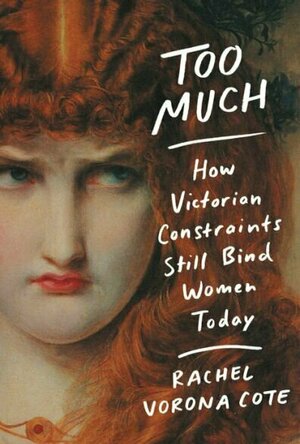Too Much: How Victorian Constraints Still Bind Women Today
BookThis item doesn’t have any media yet
2020 | History & Politics
A weeping woman is a monster. So too is a fat woman, a horny woman, a woman shrieking with laughter. Women who are one or more of these things have heard, or perhaps simply intuited, that we are repugnantly excessive, that we have taken illicit liberties to feel or fuck or eat with abandon. After bellowing like a barn animal in orgasm, hoovering a plate of mashed potatoes, or spraying out spit in the heat of expostulation, we've flinched-ugh, that was so gross. I am so gross. On rare occasions, we might revel in our excess—belting out anthems with our friends over karaoke, perhaps—but in the company of less sympathetic souls, our uncertainty always returns. A woman who is Too Much is a woman who reacts to the world with ardent intensity is a woman familiar to lashes of shame and disapproval, from within as well as without.
Written in the tradition of Shrill, Dead Girls, Sex Object and other frank books about the female gaze, TOO MUCH encourages women to reconsider the beauty of their excesses-emotional, physical, and spiritual. Rachel Vorona Cote braids cultural criticism, theory, and storytelling together in her exploration of how culture grinds away our bodies, souls, and sexualities, forcing us into smaller lives than we desire. An erstwhile Victorian scholar, she sees many parallels between that era's fixation on women's "hysterical" behavior and our modern policing of the same; in the space of her writing, you're as likely to encounter Jane Eyre and Lizzie Bennet as you are Britney Spears and Lana Del Rey.
This book will tell the story of how women, from then and now, have learned to draw power from their reservoirs of feeling, all that makes us "Too Much."
Related Items:
| Published by | Grand Central Publishing |
| Edition | Hardcover |
| ISBN | 9781538729700 |
| Language | English |
Main Image Courtesy: grandcentralpublishing.com.
Images And Data Courtesy Of: Grand Central Publishing.
This content (including text, images, videos and other media) is published and used in accordance
with Fair Use.
